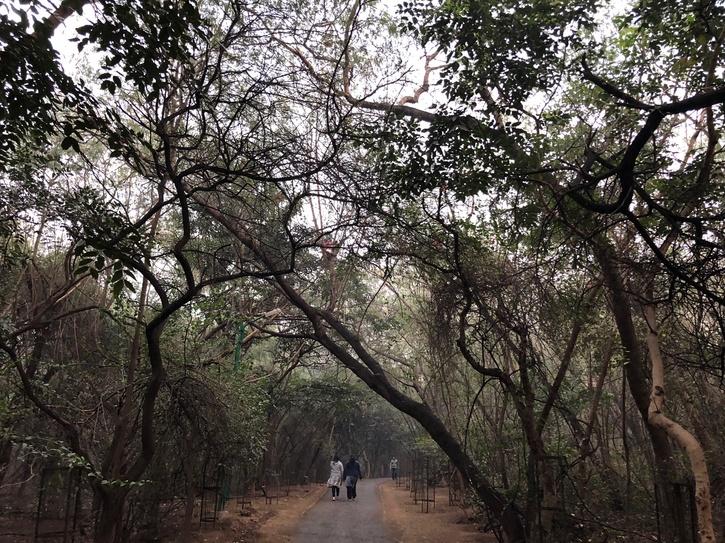
Karnataka sets free about 70% of deemed forest land for commercial use

The Karnataka government’s recent decision to ‘declassify’ more than six lakh hectares of deemed forest land is awaiting Supreme Court’s assent.
On May 5 this year, the Bommai government decided to release 6.64 lakh hectares out of the 9.94 lakh hectares of the deemed forest land for the revenue department. The decision to allocate such a vast track of land for commercial, agriculture and non-forest purposes was taken in 2014.
Of the 6.64 lakh hectare land released, 1,62,073.52 hectares of land was denotified because it does not meet the condition of having 50 trees per hectare. Besides, about 27,000 hectares have lost forest status because of the repetition of survey numbers.
What is a deemed forest?
An expert committee constituted by the Karnataka government in 2002 states that a deemed forest are dense green zones with the revenue department, not handed over to the forest department yet. It is advised that the state government should hand it over to the forest department. In case of Karnataka it was handed over to the State Forest Department, but not notified as a forest. Hence, the window of opportunity for the political class to release it for commercial purposes.
Also read: Promoting agroforestry the way forward in mitigating climate change
The Supreme Court in the case of T N Godavarman Thirumalpad (1996) had accepted a wide definition of forests under the Act. “The word ‘forest’ must be understood according to its dictionary meaning. This description covers all statutorily recognised forests, whether designated as reserved, protected or otherwise for the purpose of Section 2 (1) of the Forest Conservation Act,” the Supreme Court said in its December 12, 1996 order.
“The term ‘forest land’ occurring in Section 2 will not only include ‘forest’ as understood in the dictionary sense, but also any areas recorded as forest in the government record irrespective of the ownership. The provisions enacted in the Forest Conservation Act 1980 for the conservation of forest and the matters connected therewith must apply clearly to all forest so understood irrespective of the ownership or classification thereof,” the court said.
Karnataka’s contention
The state government has argued that it was a demand coming from people, mostly farmers, who have been tilling the land in these deemed forests without title for many years. The state says its decision to declassify the land will give these dwellers their right to the land. State Forest Minister Umesh Katti said the demand to declassify these vast tracts of land was a long-pending demand from many dwellers and farmers.
The minister said that growers of arecanut, coconut or cashew plantations and even those who have built houses on these lands will now get land title deeds.
The forest minister said that the department officials had submitted a wrong affidavit to the Supreme Court earlier. But the error has been rectified now, said Katti.
Also read: To stop species annihilation, protect forests, adopt regenerative agriculture
A forest official said the 2014 decision taken by the state cabinet then approved only 3.30 lakh hectares of land as deemed forest land. “This means that as per the initial affidavit of 1997, of the 10.11 lakh ha, after correcting all anomalies, 3.30 lakh ha is deemed forest,” the official said.
Impact of declassifying 70% deemed forest on environment
The Karnataka forest department officials say that 6.64 lakh hectares of land cannot be declassified because it was never classified as forest land. An official said this land already includes forest areas and revenue pockets. The land which is actually available with the state government is only 1.10 lakh hectares.
Yet another forester argued that the state is only looking at the commercial value of the land. He said that using 6.64 lakh hectares of land for non-forest and commercial activities will have an adverse impact on the environment. Due to increasing urbanisation in areas abutting Madikeri, Shivamogga and nearby forest ranges, natural calamities like landslides and flooding are increasing, which mainly happens due to soil erosion.
Though human activities have been happening in these deemed forests for many years, there was a check mainly because land deeds were not given. If these regulations are removed, soil erosion will happen frequently, remaining trees will be under danger and wildlife will come under renewed threat.
Former principal chief conservator of forest BK Singh told The Indian Express that the state’s decision is unfortunate. “The state has sent a revised proposal to reduce deemed forest land to one third of the extent identified earlier in 2002. One of the main reasons stated is that the tree density in many such areas of deemed forests has gone down. In other words, the state admits that they have failed to protect deemed forest land. The state could also think of rewilding these areas with native species. Instead they want to delete them from the deemed forest list.”
Singh said the government and politicians want to help encroachers.


